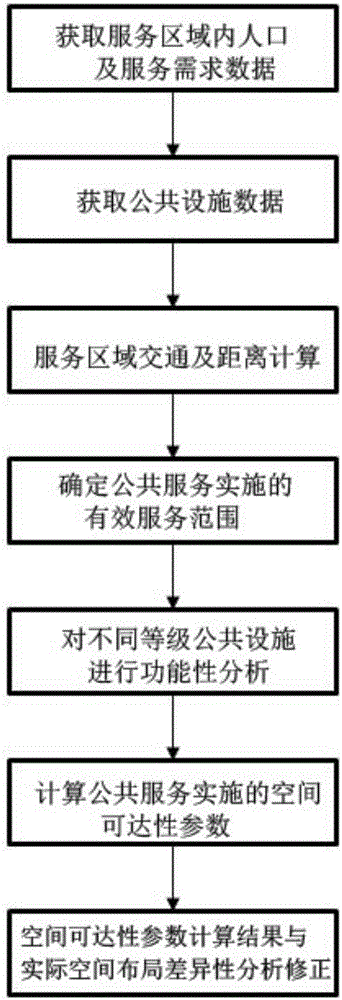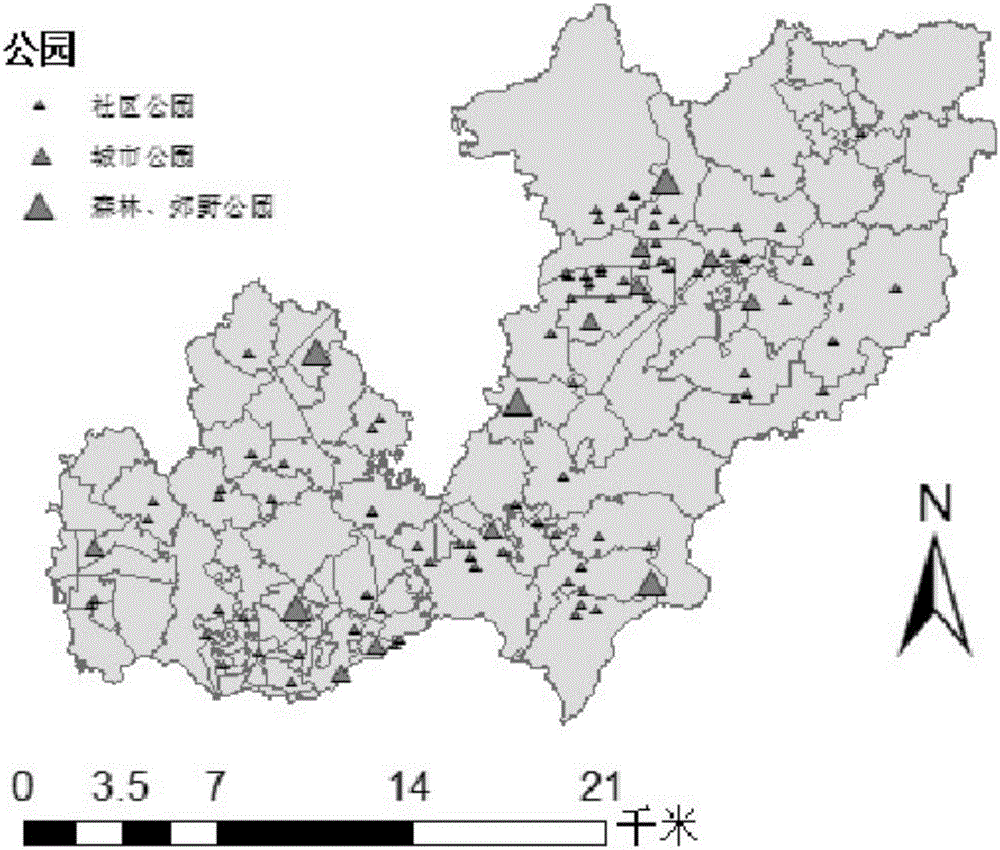Spatial accessibility analysis method and device based on public facility differences
A technology of public facilities and analysis methods, applied in the direction of instruments, data processing applications, calculations, etc., can solve the problem of reducing the resolution and description ability of analysis results, unable to meet the classification guidance and planning of urban planning departments, and unable to distinguish between different functional classifications of public facilities. To achieve the effect of improving hierarchy and operability, and facilitating planning and construction
- Summary
- Abstract
- Description
- Claims
- Application Information
AI Technical Summary
Problems solved by technology
Method used
Image
Examples
Embodiment Construction
[0039] In order to make the technical means, creative features, goals and effects achieved by the present invention easy to understand, the present invention will be further described below in conjunction with specific embodiments.
[0040] Taking the calculation of the accessibility of a park space in a certain community in a certain city as an example, the specific implementation method of the present invention is described in detail:
[0041] Such as figure 1 As shown in —10, a spatial accessibility analysis method based on the difference of public facilities includes the following steps:
[0042] The first step is to obtain the population and service demand data in the service area, and use the relevant statistical department of the city government to collect information on the population, age ratio, education level and other information of the area to determine the public facilities services of the resident population in the service area Types and characteristics of dema...
PUM
 Login to View More
Login to View More Abstract
Description
Claims
Application Information
 Login to View More
Login to View More - R&D
- Intellectual Property
- Life Sciences
- Materials
- Tech Scout
- Unparalleled Data Quality
- Higher Quality Content
- 60% Fewer Hallucinations
Browse by: Latest US Patents, China's latest patents, Technical Efficacy Thesaurus, Application Domain, Technology Topic, Popular Technical Reports.
© 2025 PatSnap. All rights reserved.Legal|Privacy policy|Modern Slavery Act Transparency Statement|Sitemap|About US| Contact US: help@patsnap.com



